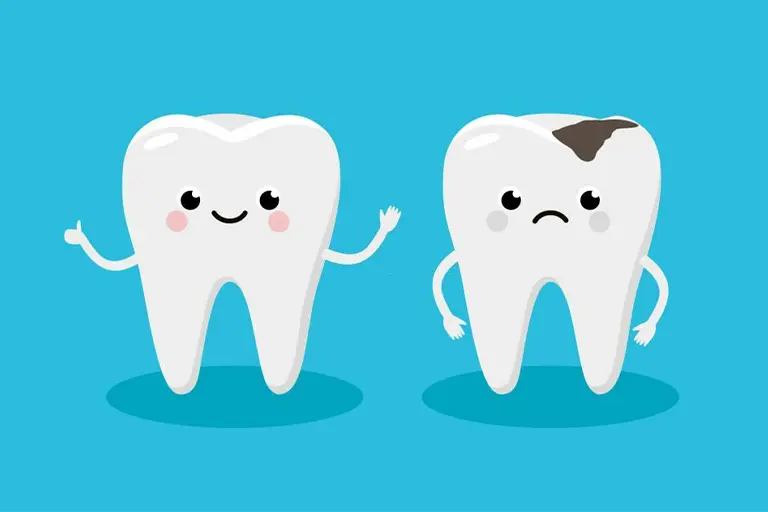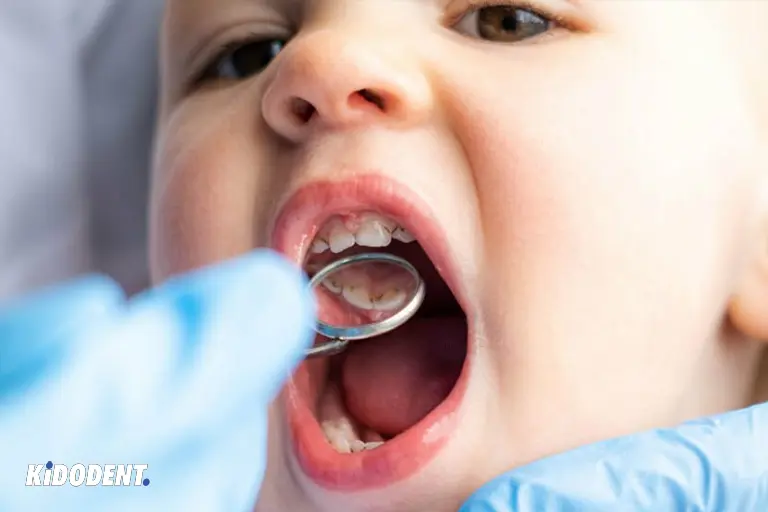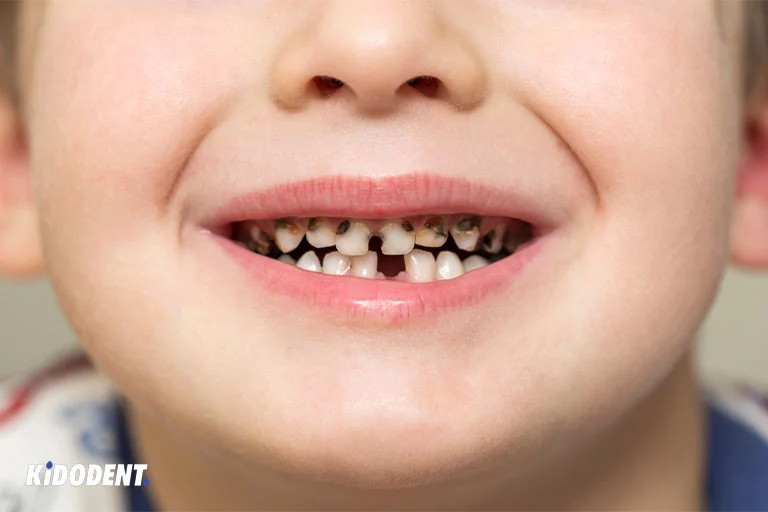Tooth decay is the most common oral condition among adults and especially children. It is the second most common disease (if you can call it) after the Common cold. What you will read here is all about tooth decay in children from prevention, causes, and symptoms to diagnosis and treatment.
What are the causes of tooth decay in children?
Infectious bacteria together with some other factors play a major part here. Sometimes, children’s eating diet is high in carbohydrates (sugar and starch). For example, children eat too much milk, soda, raisins, candy, cake, juice, bread, and cereal.
As bacteria exist in the mouth, when children eat something (and Adults do too), these bacteria feed on what children eat. As a result of eating foods containing carbs, acid is produced. Bacteria with acid, and leftover food in the teeth, build up plaque, which is sticky and is formed on our teeth.
Plaque and too much acid that is produced by bacteria can lead to teeth deterioration, but if oral hygiene routines are practiced, tooth enamel can be restored.
Poor oral hygiene can stop the rebuilding of enamel and will cause dental caries or cavities. You don’t want to let that happen to your children’s teeth, do you?
What kind of child is going to be affected by tooth decay?
You can’t get away from Them. As long as bacteria are in the mouth, we are prone to be affected.

Possibilities for tooth decay can be high, depending on the conditions of children:
- If there is a high accumulation of infectious bacteria in the mouth
- They eat foods high in sugar and starch
- There is a lack of fluoride supplements in their drinking water
- They have poor oral health
- If there is a low rate of saliva production
What are the tooth decay symptoms?
Tooth decay signs can be different from one child to another depending on its stage. The most common symptoms are:
- White spots likely develop in the decaying parts, emerging signs of enamel deterioration. Children do show initial sensitivity.
- The development of small light-brown cavities
- These cavities start to get deeper and darker and turn black
Since symptoms can be difficult to notice. An in-office examination is necessary. Especially, if there is any pain, a visit to a pediatrician can provide a good diagnosis.
- Oral and dental pain
- Developing a sensitivity to some foods, candy, cold and hot beverages
How tooth decay diagnosis is done?
There are generally 3 ways to detect tooth decay and its rate. These all-inclusive ways are:
- Clinical history analysis of the patient
- Oral and dental check-ups
- Dental radiography
What are the treatments for tooth decay in children?
Factors like symptom differences, age of the child, well-being, and severity of tooth decay are all decisive in how treatments are planned.
Most of the time, restorative treatments are the option that we can overcome decay problems. After the preparation of the cavity, the filling is the next step to seal the cavities. It doesn’t make a difference between adults and children.
2 ways to treat tooth decay in children by filling:
- Direct filling: This is the normal filling in which the dentist applies the filling material into the cavity in a single visit. Fillings for this can be silver fillings or composite resin fillings. You can select composite, which is white (tooth-colored) fillings.
- Indirect filling: It needs two sessions and these kinds of fillings are created in the laboratory. Crowns, inlays, onlays, and bridges are such dental work. They are made of porcelain composite, gold, metal, ceramic, and other materials.
How to prevent children’s teeth from decaying?
First off, yourself
As a mother, you need to start with yourself. Oral and dental health during pregnancy, because of hormonal changes, is an important factor that results in the better dental health of your child.
Take care of your child’s teeth
Whether you breastfeed or bottle-feed, there are some baby care tips you need to know:
- Birth to 12 months: Keep their gums clean by wiping them with a clean piece of cloth. With the first teeth coming in, you can use a soft brush and a tiny amount of toothpaste to gently brush their teeth.
- 12 to 36 months: Brush your baby’s teeth twice a day for around 2 minutes each time. Remember to use fluoridated toothpaste. For the best preventive ways of tooth decay, brushing after breakfast and before sleep is a key anti-decay habit.
When it is bedtime, keep foods and milk bottles out of sight
After brushing their teeth, babies should not eat anything. Foods and milk bottles should be out of reach. If you don’t pay attention, you may increase the risk of ear infection or even suffocation.
Pacifier but not bottle
There are some cute water drinking bottles and sippy cups for babies. They like to bite these cups and bottles and this is not something you want. They may need correction to treat malformed teeth later. Avoid getting your baby to drink too much between their meals since it causes tooth decay.
Does your drinking water contain fluoride?
Concerning health-related policies, the community water system has some recommended levels of fluoride, which helps teeth remineralization.
If there is no fluoride in the drinking water, the dentist can prescribe fluoride supplements. They can even prescribe fluoride varnish application.

Teach your child to use cups for drinking.
Children usually carry their milk bottles everywhere (even in bedrooms). They use these bottles for drinking water or juice. That increases the risk of tooth decay.
Using cups helps them to drink easily, and children don’t prefer to carry them everywhere.
Should children drink juice?
According to the American Academy of Pediatrics (AAP), infants under 6 months shouldn’t be given sugar water and fruit juice. From 6 to 12 months, parents can give their children sweet drinks but with limitations and little amount.
As an example, the amount of juice given should be around 4 ounces and dissolved in half a glass of water. For kids from 1 to 6 years, 4 to 6 ounces per day are enough.
We should remember that even this amount of juice should be given to children with their meals rather than as snacks. We know the risk of tooth decay increases if children forget to brush their teeth.
Take your child to the dentist from those early years.
That is fine if you haven’t taken your 1-year-old baby to the dentist. However, a visit to your local dentist can assure you that your baby’s teeth are in perfect health.
If you can’t find any dentists in your local community, take your child to a pediatrician’s office.
If you notice any minor symptoms of tooth decay, do something
Sometimes, there are some minor signs of tooth decay that are left unnoticed. Don’t worry! You can take some preventive steps or reverse tooth decay, anyway. You can visit the pediatric dentist for necessary examinations.
